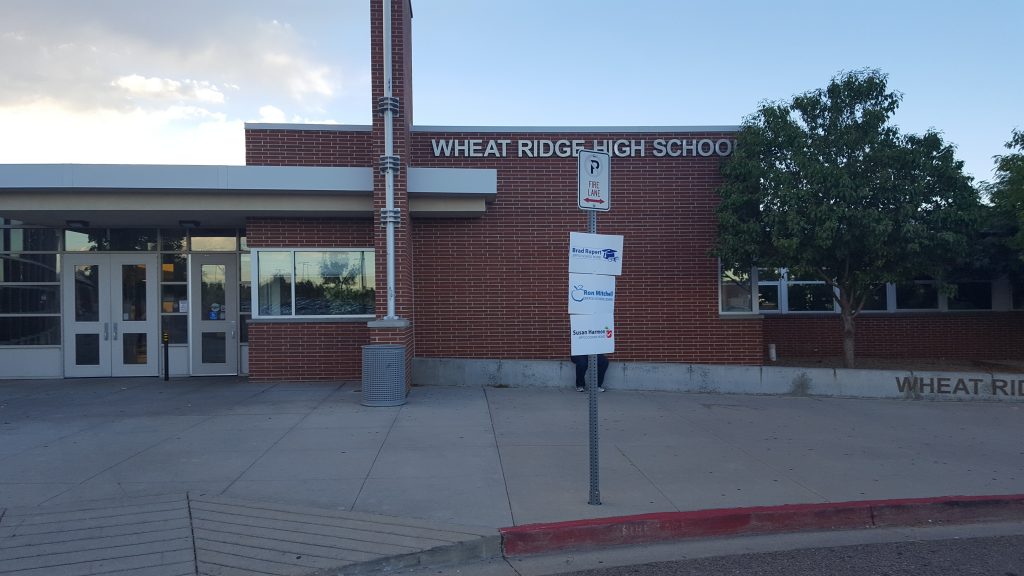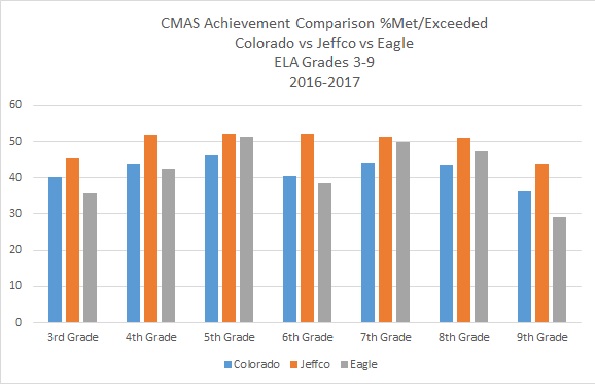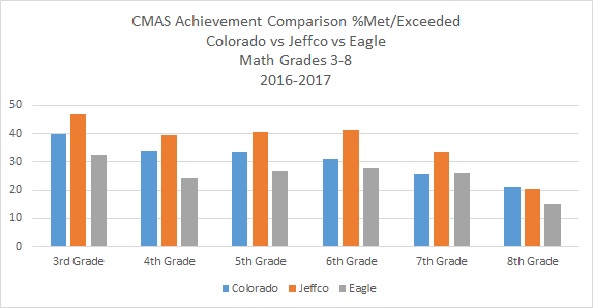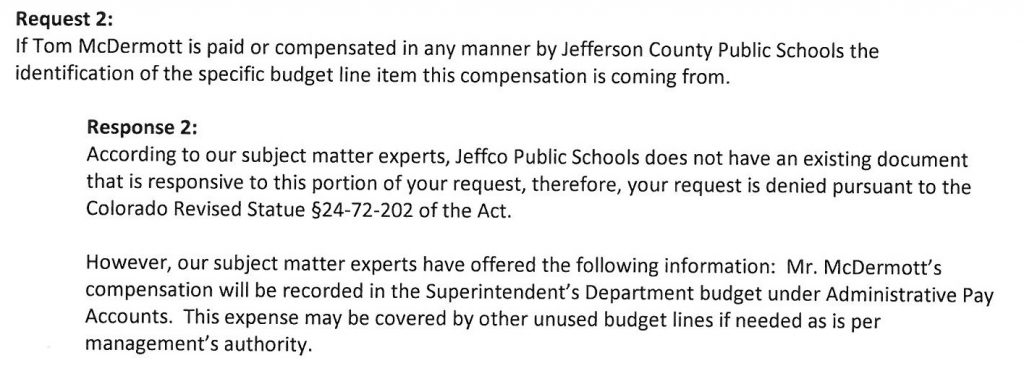You only have to listen to the incumbent Board members tell us what they have accomplished in the last two years to realize that they have failed.
What do you hear them say most often?
- They have returned civility to the Board room.
- They hired a new Superintendent.
- They have slowed teacher “churn”.
However, it’s especially disappointing that you never hear them talk about the improvements in education they have fostered in the District. But with 68%% of Jeffco grads not College and Career ready and more than 55% of 3rd Graders (in 2016) not meeting state standards, I guess they can’t really do that. In addition, removing incentive based compensation from the new Superintendent’s contract certainly isn’t an indication that education is a primary focus. Actions speak louder than words in my book.
They also don’t talk about their failure to get needed Mill levy and Bond measures approved by the voters last November, the only major school district in the state that didn’t get tax measures approved. 3A and 3B were messes and the incumbent Board oversaw and approved those.
Still, I think it is important to examine what the Board has been touting as their accomplishments:
It is misleading at best when the incumbent Board members talk about returning civility to the Board room. Wasn’t it their supporters and the pro-recall organizers who created the most disruption in the Board room? I’m not sure this really qualifies as an “accomplishment”.
I won’t disagree that the Board hired a new Superintendent. But, the real questions are ‘Why did the Board hire a new Superintendent? And “What was wrong with the previous Superintendent?” Unfortunately, again it doesn’t appear that the primary reason was to improve education in Jeffco. If you compare either Jeffco’s education achievement or growth results with Eagle County (here, here and here), where the new Superintendent came from, the Jeffco results are better. We didn’t get someone who has a history of moving the education needle. By education performance measures we didn’t get someone who was better. In addition, the incumbent Board candidates like to continually remind us that they think it is important to have “continuity” in the Board and District leadership positions, but it looks like that only applies to their positions as they were the cause of a drastic change in “continuity” in the more important Superintendent position.
Finally, the Board members like to talk about how they have reduced teacher “churn”, the turnover of teachers each year, a result of their nearly $40M in teacher compensation increases over the past two years. Unfortunately this claim is mere speculation as the District does not conduct exit interviews of teachers. Every year teachers, like many people, change jobs for a wide variety of reasons such as retiring, moving for family reasons, pregnancy, changing careers, and yes, moving for compensation reasons. But, to claim that the $40M in compensation increases had a direct impact in reducing teacher turnover is completely unsupportable and misleading, and demonstrates that the incumbent Board members don’t really understand the number they are using (http://improvejeffcoschools.org/index.php/2017/06/26/the-continued-spreading-of-alternative-facts-regarding-teacher-turnover/).
For these reasons, and others, I think it is time for a change in the composition of the Board. We need a Board that is focused on student achievement, a Board that is focused on accountability and a Board that doesn’t try to avoid and mislead us about what they have done and “accomplished”.
It is time that we have a more balanced Board that actually listens and better represents the diversity of thought in our District.
I will be voting for that change by voting for Erica Shields and Matt Van Gieson for School Board in November.








